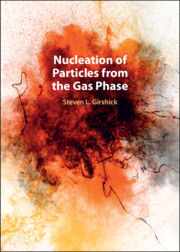3 results
8 - Chemical Nucleation
-
- Book:
- Nucleation of Particles from the Gas Phase
- Published online:
- 30 May 2024
- Print publication:
- 06 June 2024, pp 166-184
-
- Chapter
- Export citation
1 - Introduction
-
- Book:
- Nucleation of Particles from the Gas Phase
- Published online:
- 30 May 2024
- Print publication:
- 06 June 2024, pp 1-13
-
- Chapter
- Export citation

Nucleation of Particles from the Gas Phase
-
- Published online:
- 30 May 2024
- Print publication:
- 06 June 2024

